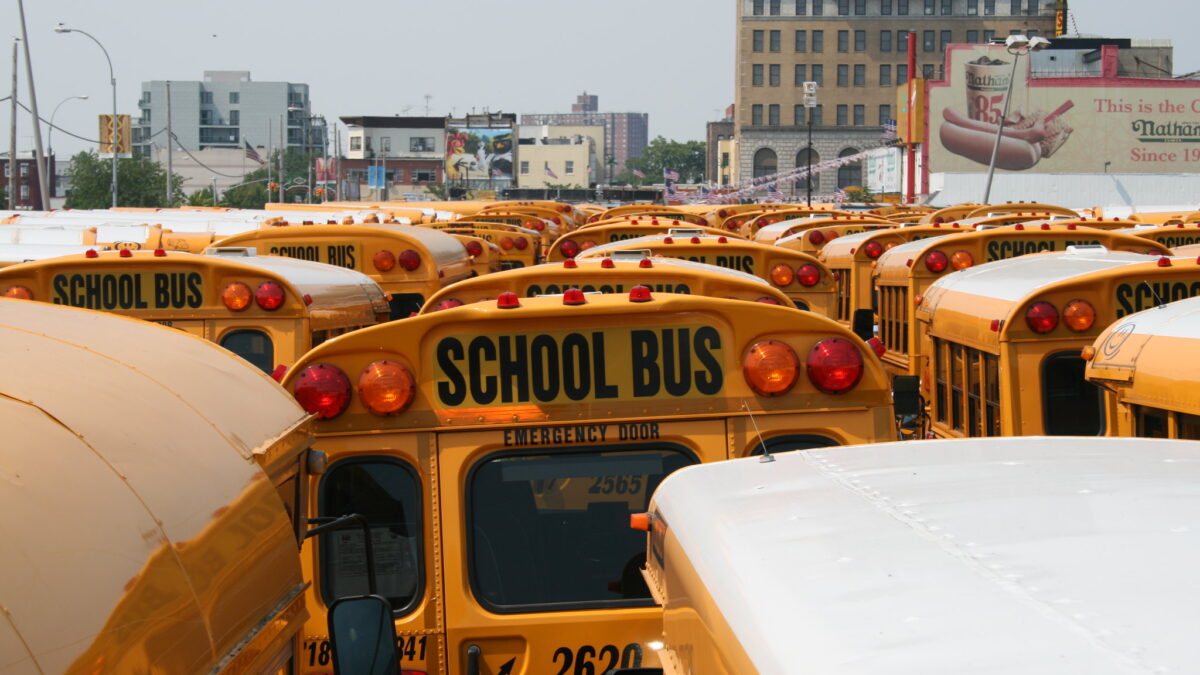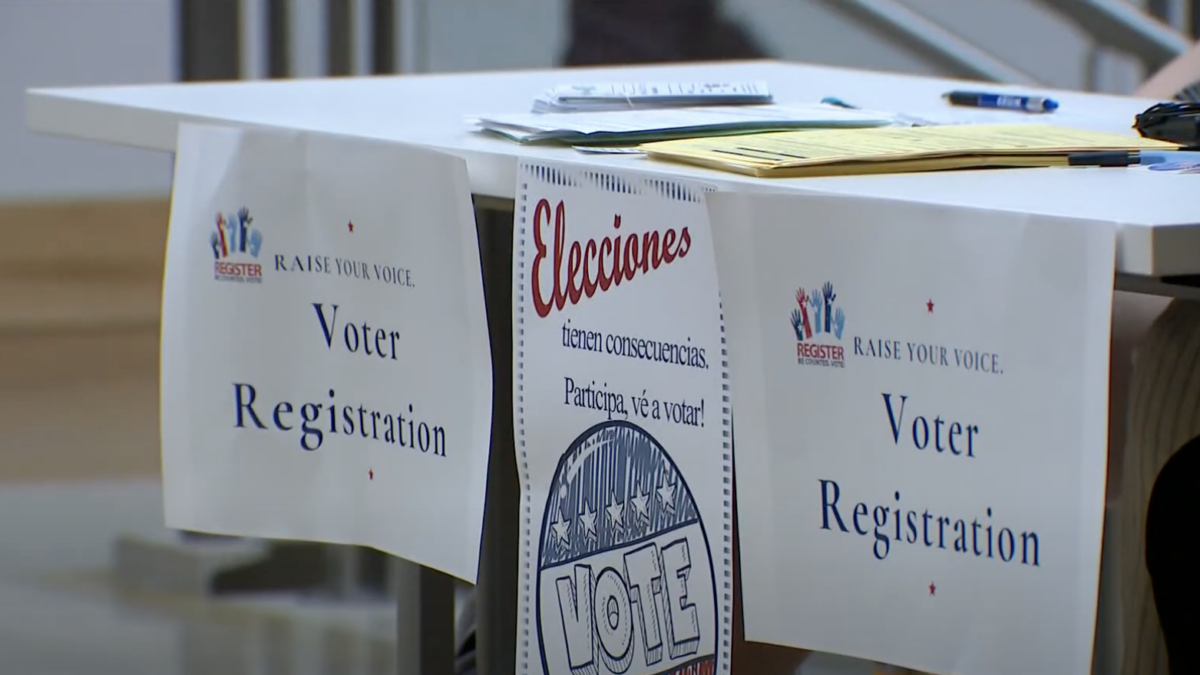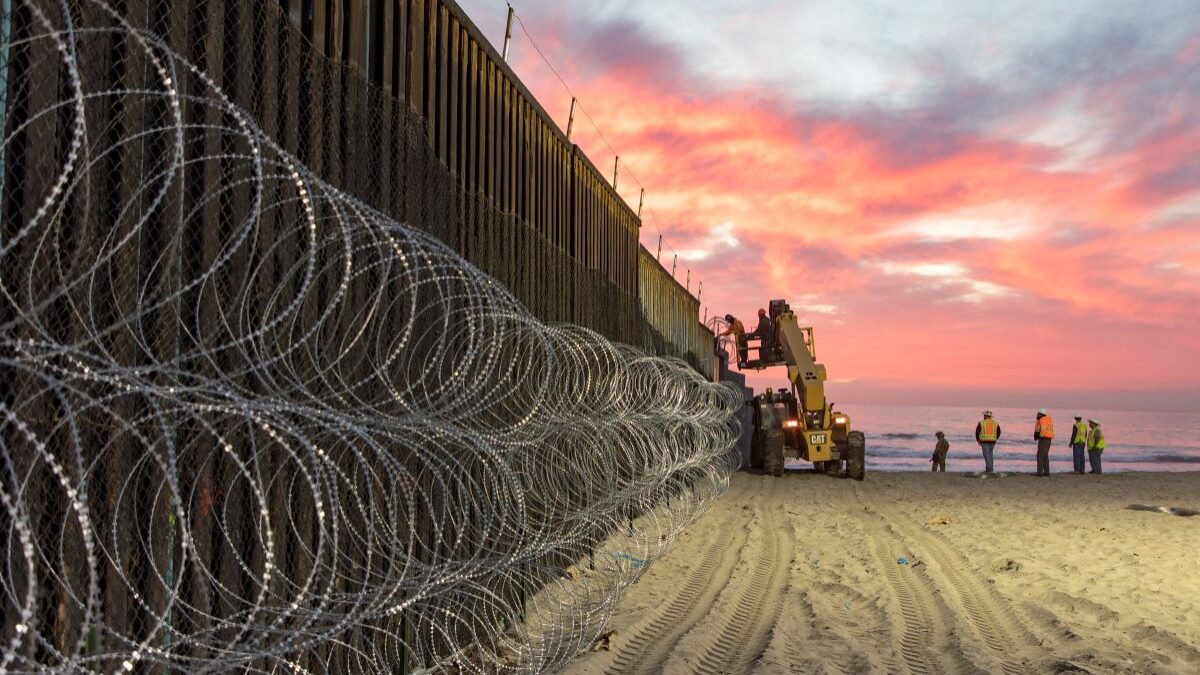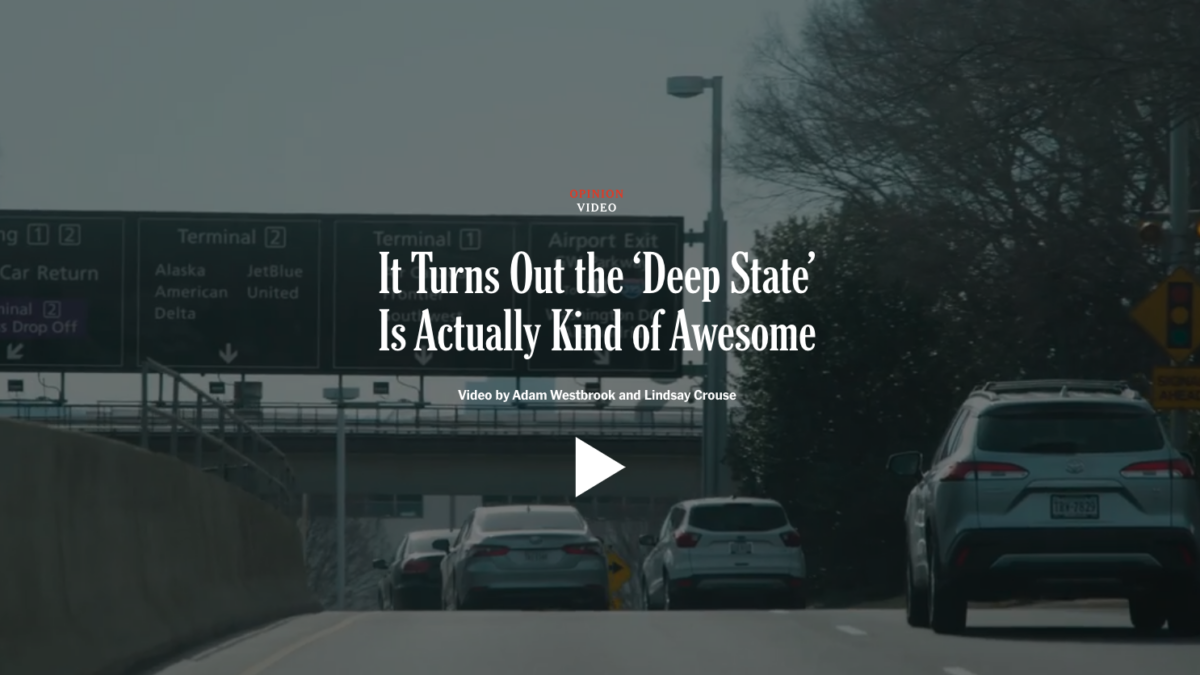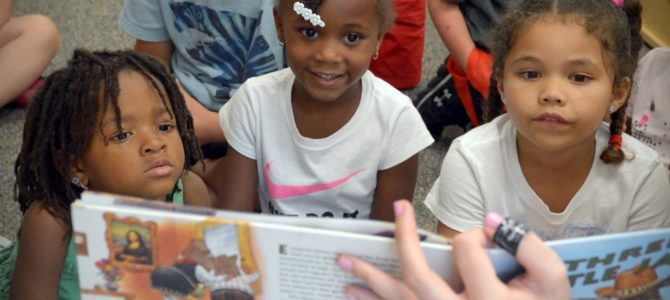
As the West Virginia Senate gathered in special session to vote on a sweeping education reform bill toward the end of June, debate in the Capitol was suddenly interrupted by dozens of phone tornado warnings. When the lights began to flicker, senators were forced to postpone the vote and take shelter in the basement. An EF1 tornado was later confirmed to have touched down nearby.
Delayed but not deterred, the senators returned to the floor and passed the bill, 18-16. Four days later, the governor signed it into law—providing a $130 million windfall for public education, a significant return of control to local school districts, and the state’s first authorization of public charter schools.
Not even a tornado could stop a new day in education in WV!!! pic.twitter.com/ybcv3m2APD
— Kathie Hess Crouse (@KathieHess) June 25, 2019
The storm was a fitting metaphor for the tempestuous education debate that has been roiling this state for more than a year. The fight began in February 2018, when public school teachers across West Virginia went on a crippling (and unlawful) nine-day strike, demanding better pay and benefits. They finally went back to work after the Republican-led Senate found a way to pass a 5 percent pay raise without raising taxes.
Gov. Jim Justice, who was elected as a Democrat in 2016 but quickly switched his party affiliation to Republican, promised teachers another 5 percent raise this year. Senate Republicans balked at this second pay raise, contending that such largesse should be coupled with meaningful education reform for students.
By almost every measure, West Virginia’s public education rankings are dismal. Even when student demographic factors like poverty and family structure are taken into account, the state’s education performance ranks dead last. Public school enrollment is steadily shrinking, as population declines and families increasingly choose alternatives like homeschooling.
“If the amount of kids who were homeschooled in West Virginia would form a school district, it would be the largest in the state,” says Delegate Dean Jeffries (R–Kanawha). “Public charter schools just may be a saving grace, if they would quit playing political football with education.”
Teachers Strike Against School Choice
Indeed, school choice measures—specifically public charter schools—have been the center of the firestorm over education. Until now, West Virginia has been one of only three U.S. states lacking even a single choice option, such as vouchers, education savings accounts (ESAs), tax credits, or charter schools.
The state’s powerful teachers unions were perfectly happy to keep things this way. “You say West Virginia is one of only four states that don’t have charter schools,” the president of West Virginia’s American Federation of Teachers (AFT) recently stated at a legislative hearing. “We should wear that as a badge of honor.”
So when the Senate passed an ambitious education bill this February that coupled the promised pay raises with ESAs and charter schools, unions were furious. For the second time in two years, they called for a statewide teacher strike—this time not over their members’ pay and benefits, but over public policy. The strike began on February 19 and didn’t last long. By the end of the day, the Republican-led House of Delegates had caved to the pressure and killed the bill. The unions declared victory, extending the strike a second day just to be sure. It seemed education reform was dead.
Justice, never an advocate for school choice, urged the legislature to send him a “clean” pay raise bill. The House dutifully passed a standalone pay raise and sent it to the Senate. Then, in a rare display of Republican backbone, the Senate refused to take up the pay raise bill. Their message was clear: without wider reform, there would be no second pay raise.
That “no” from the Senate put Justice in a bind, prompting him to call for a special session on “education betterment” later in the year. In the meantime, legislators were instructed to go home to their districts and seek out their constituents’ views. What did teachers, parents, and taxpayers really want to see in order to improve West Virginia’s public schools?
Manufacturing ‘Public Opinion’
What followed was a clever attempt by the education establishment to keep control of the narrative. Rather than simply allowing legislators to plan their own meetings with constituents, the West Virginia Department of Education (WVDE) hatched a plan to co-opt the listening tour. Using tax dollars, it hired a “consensus-building” firm to run education forums throughout the state. Legislators were invited to attend but strictly forbidden from interacting with their constituents.
“The Board of Education hired a marketing firm to run the meetings so they could overshadow the small one-on-one meeting the delegates were having,” says Delegate Marshall Wilson (R–Berkeley). “I was told specifically that I was not allowed to speak at the forum.”
While legislators were muzzled, WVDE employees were allowed to moderate round-table discussions on hot-button topics. “Those in attendance were told that charter schools would be privately funded by big corporations outside of the state,” Jeffries told me. “There was no way to counter the misinformation.”
The forums—lightly attended by the public but heavily attended by teachers—were also a daunting environment for the many West Virginians with a culturally ingrained fear of unions. As I wrote this spring, unions have a uniquely intimidating presence in this state. Many parents and teachers are scared to voice their opposition to the union agenda, fearing reprisals in their schools and communities.
“I’ve talked with close to a hundred teachers who have been abused, mistreated, marginalized, and mocked for not agreeing with the strike,” Wilson told me. “I’ve talked to parents who say, ‘I support school choice with every fiber of my being, but I’m scared to death to publicly announce that.’”
Legislators have discovered that many constituents open up in informal settings when they’re allowed to speak freely. “The feedback from most constituents has been good,” Jeffries told me. “Prior to the passage of the bill I had some parents ask for an informational meeting with no educators or school administrators, in fear of retribution. Senator Takubo and myself hosted an informational forum for parents, and it was great. It lasted for more time than we had allotted and ended up carrying over into the parking lot for an extra hour.”
For West Virginians who weren’t able to attend an education forum, the WVDE also conducted an online survey, receiving 17,000 responses. However, as the following screenshots show, the online survey never polled West Virginians on the most controversial issue of the debate: school choice. Not a single survey question mentioned charter schools, ESAs, or vouchers.
WVDE did, however, poll the attendees of its strictly controlled forums. This produced 690 carefully-curated opinions on charter schools, of which (surprise!) 88 percent were opposed. “Eighty-eight percent of West Virginians oppose charter schools” quickly became gospel among unions and their allies. One teacher made headlines by writing “88%” on a piece of duct tape, with which she covered her mouth during her public comment period in the House of Delegates.
Caucus member Tonya Stuart Rinehart wears duct tape with 88% on it at the public hearing this morning, signifying that 88% of WVians oppose charters but are being silenced by our legislature. pic.twitter.com/tVQGuVlJLN
— WV United Caucus (@CaucusWv) June 19, 2019
WVDE had succeeded in taking feedback from 690 attendees of its skewed forums and passing it off as representative of the whole state, while neglecting to poll 17,000 online respondents on the same question.
‘This Is Step One’
Unsurprisingly, Republicans in the Senate were unpersuaded by the forums’ biased findings. Returning to Charleston for the special legislative session, the Senate put forward a second education bill, weaker than the February legislation but with many reforms left intact.
The special session differed from the regular session in one key respect: it didn’t get fully underway until schools were out for the summer. This removed the unions’ ability to skew the debate with illegal strikes. In fact, once the unions realized the key votes would take place in June, they called on the governor to cancel the special session. “Let’s glove up, meet in January and let the bell ring,” said one union director. “Don’t hide behind these walls in the summer.”
As the session continued, angry teachers, including some bused in from neighboring states, descended on the Capitol grounds to voice their dissent. But without the ability to strong-arm voters by holding their children hostage, teachers were forced onto an equal playing field with every other West Virginian. (Except, perhaps, for the fact that most of us wouldn’t be allowed to yell inside the capitol.)
turns out WVians arent interested in the opinions of out-of-touch billionaire oligarchs.. who’da thunk it.. listen to this room of everyday hardworking folks protesting privitization of public ed @ charleston capitol (again) chanting “devos is not the boss!” #RedforEd #55Strong https://t.co/K29H42xsOk pic.twitter.com/7CvIS918mE
— Douglas J Harding (@douglasjharding) June 1, 2019
Despite intense pressure on delegates, House Bill 206 passed by a narrow margin on June 19. It was far weaker than the Senate version of the bill, allowing just three initial charter schools statewide, and only then if local school boards approve. Key provisions that would have imposed real consequences for unlawful strikes were stripped from the House bill.
However, many Republicans saw the legislation as an important step forward in improving schools and breaking the stranglehold of the unions. “I voted in favor of H.B. 206 because it did a tiny bit to attempt to give choice in education,” Jeffries said. “A very small amount in comparison to the benefits that teachers would receive from it.”
State Sen. Patricia Rucker (R–Jefferson), the architect of education reform in the Senate, echoed these thoughts: “This is step one. We’ve put a stake on the playing field, so now we’ve joined 48 out of 50 states. But really, the charter schools were a tiny, almost insignificant part of this bill. The real meat of the reform was in sending control back to local school districts.”
Rucker says the bill loosens restrictions on local districts and schools, allowing county school boards to choose their own curriculum and establish specialized district schools similar to charters. Teachers have been given more authority over their classrooms in making decisions on whether to pass or fail a student. Parents, meanwhile, have been given flexibility to enroll their children in schools outside their ZIP codes, even across county lines.
One of Rucker’s most personally satisfying victories was in ending the requirement that all teachers throughout the state be paid equally, without regard to the individual needs in their districts. In Rucker’s district, which is on the outer edges of the D.C. metro area, the higher cost of living renders the state’s teacher salary uncompetitive, and schools lose good teachers to neighboring states.
“The only reason we didn’t have locality pay was because of the unions,” Rucker told me. “If you talk to local union leaders in my district, they deny that the unions have opposed locality pay. But the statewide union leaders are adamantly opposed to it.” Earlier this year, the presidents of both major teachers unions admitted as much in an interview, saying they couldn’t support wage differences because that would “create hard feelings between educators.”
‘They Can’t Allow Even a Little Bit of Liberty’
Rucker believes this was a revealing moment, clearly showing that unions are more concerned about their political coalition than the welfare of students or teachers. “It’s not about the students. It is about keeping Charleston’s grip on education, keeping it centralized in the hands of the few,” she says.
An unwillingness to cede even a small amount of power, Wilson agrees, is the only logical explanation for the hysterical reaction to a bill that was extremely short on school choice and long on public education spending. (Taking the pay raises of 2018 and 2019 together, Republicans have given teachers the largest salary increase in state history.)
“Why in the world would you want to throw away everything else in the bill, just because of the possibility of three charter schools?” he asks. “There’s only one way to explain that: they can’t allow even a little bit of liberty. They know that the moment you lift your foot off liberty’s throat, liberty is at your throat.”
Teachers unions have whipped their members into such a frenzy over the bill that Republicans who voted “yes” are now facing organized attempts to punish them via boycotts of their personal workplaces. (Some of these boycotts are grassroots efforts, but others have been started and encouraged by public-sector unions. For examples, see this petition and this video at the 25:00 mark.)
More ominously, the brazen strikes in West Virginia are attracting the political energy of self-proclaimed socialists and Marxists, and inspiring similar action in other states. It’s clear that the radical left is hoping to use the energy of public-sector unions to gain a foothold in this Republican-leaning state. The question is: will that energy translate into gains at the polls in 2020? Or have public-sector unions, at long last, worn out their welcome in West Virginia?
The legislators with whom I spoke seem ready to let the voters decide. “In my opinion, people in general are sick to death of this mess,” Wilson told me. “You’ve got a populace that makes less on average than the public employees they’re supporting. Many West Virginians can’t even afford health insurance, and educators have the moxie to complain because we only pay 80 percent of their health care costs. They’re going on strike and leaving working people in the lurch without child care. And they think these people are on their side?”
Senate President Mitch Carmichael, who is perhaps the unions’ public enemy number one, was resolute but upbeat on the night the bill passed. “I am absolutely confident that the people of West Virginia recognize the crisis that our current education system is in,” he told reporters. “If doing the right thing gets one unelected, then so be it.”





